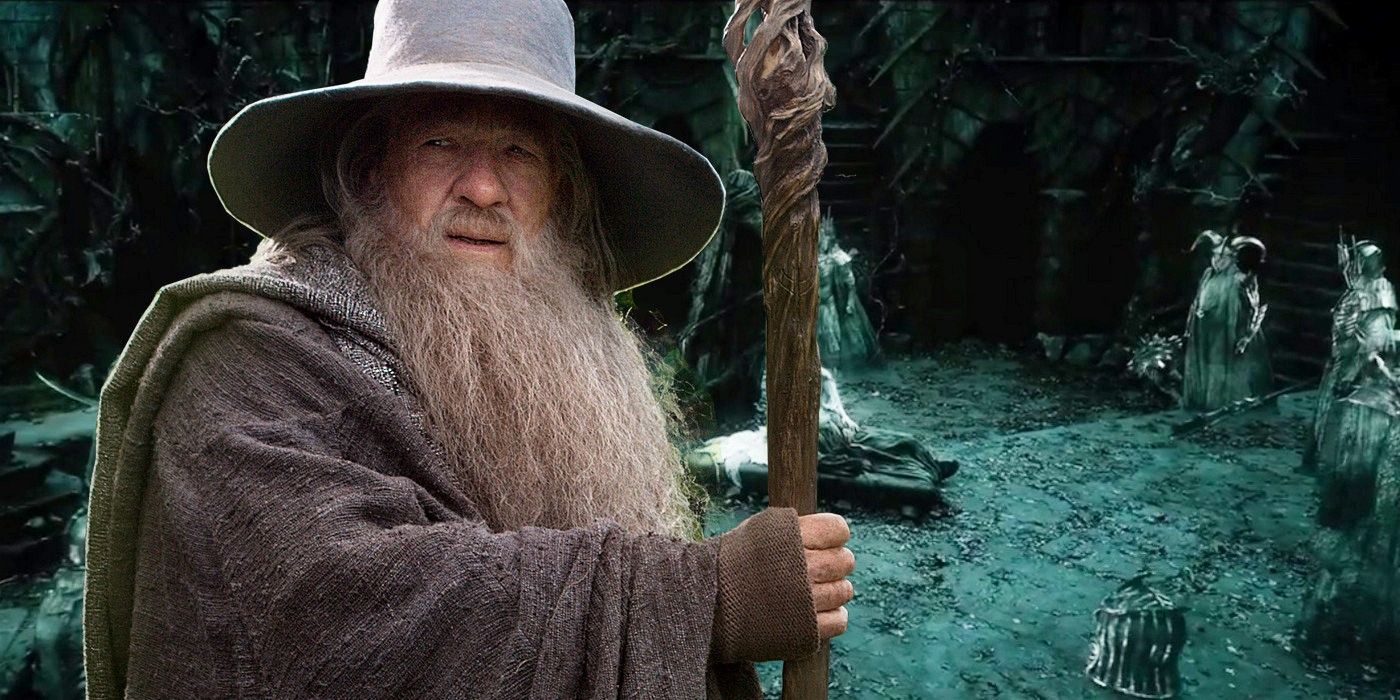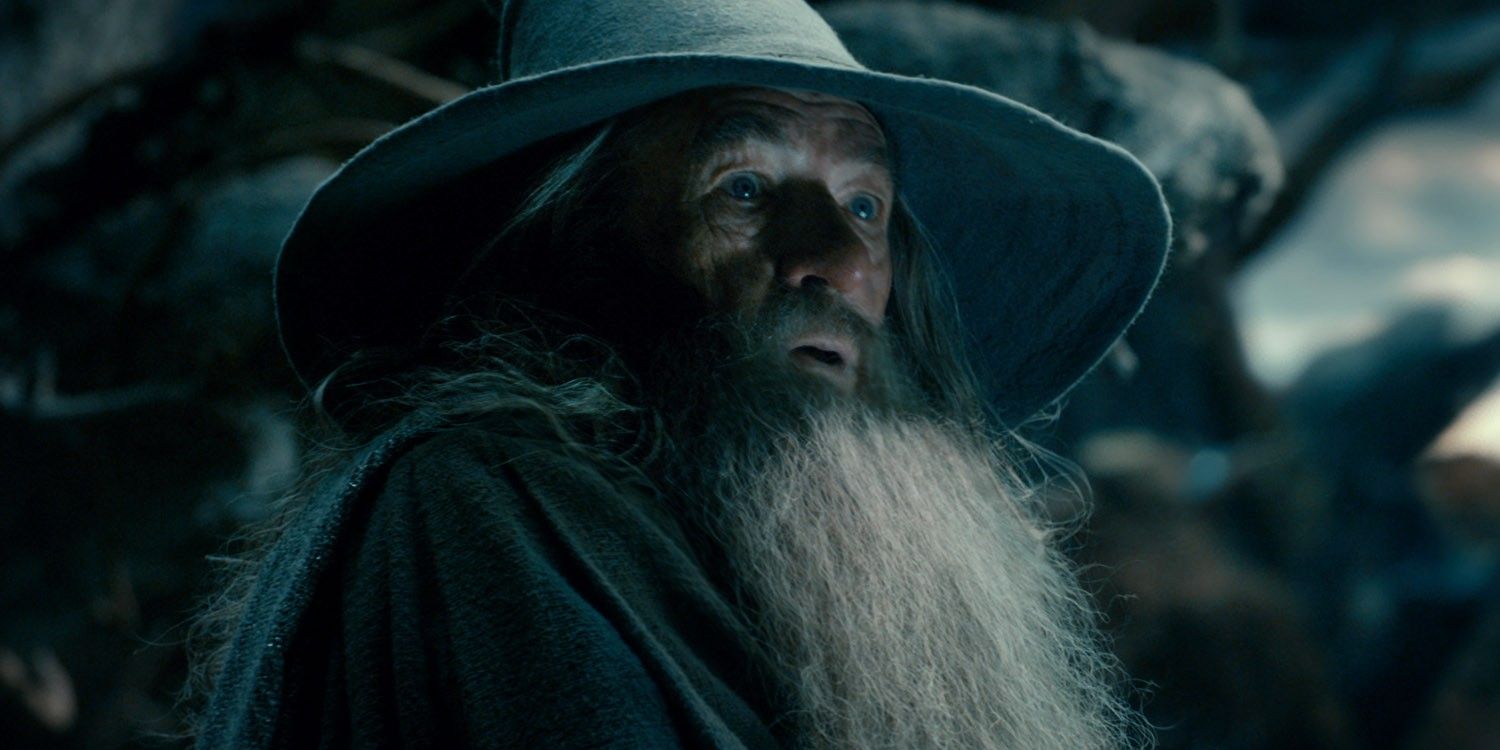Peter Jackson's The Hobbit movies deviate from J.R.R. Tolkien's original lore for the Nazgûl, otherwise known as Ringwraiths. After the mammoth success Jackson enjoyed with his The Lord of the Rings trilogy, it was only a matter of time before The Hobbit received the same treatment, and while Jackson tried his best to stay out of the director's chair, fate apparently had other ideas. The Hobbit was originally conceived as a two-part cinematic story that split Tolkien's novel in half but Jackson expanded to a trilogy, looking to explore material from the author's appendices and wider writings. Arguably the most significant additions were the scenes chronicling Sauron's return.
The Lord of the Rings was relatively faithful in its depiction of the Nazgûl - cloaked, ethereal servants of Sauron who rode on horseback. The Ringwraiths were originally kings of men in Middle-earth but after accepting nine Rings of Power from the Dark Lord, their souls were gradually corrupted until each had fallen completely under Sauron's sway. This much Jackson's trilogies keep intact. As written by Tolkien, the Nazgûl led Sauron's forces during his original era of dominion, but after being defeated by the Last Alliance of Elves & Men, the Enemy and his hooded henchmen faded. As long as the One Ring remained intact, however, they could cheat death. Following centuries of Sauron recovering, the Ringwraiths returned and began wreaking havoc once again. The group's leader, the Witch-King of Angmar, waged war against the enemies of Mordor and after many more years, the full nine Nazgûl got the band back together when Sauron was ready to officially announce his own comeback tour of Middle-earth.
Sauron's return coincides with the events of The Hobbit, but the original novel only makes passing references to "The Necromancer." Jackson explores these allusions in full, embellishing certain parts along the way. One of Jackson's major deviations is the role of the Nazgûl in The Desolation of Smaug. As with the movie, Tolkien's Middle-earth history sees Sauron occupy Dol Guldur and Gandalf, along with the White Council, send him packing back to Mordor. The Desolation of Smaug reads between the lines and adds its own details to this battle, as Tolkien never recounted how the fight actually played out. The movie's inclusion of the Ringwraiths in this scene is the result of Jackson's own inference, but at least doesn't directly contradict the original author.
On the other hand, The Desolation of Smaug's Nazgûl tombs are more problematic. In Jackson's The Hobbit trilogy, Gandalf suspects the Necormancer is Sauron but only confirms this hunch by visiting the graves of the Nazgûl at the High Fells of Rhudaur and finding each tomb ominously empty. Knowing the Ringwraiths could only be summoned by their master, Gandalf concludes that Sauron's power must be returning. This entire story is a Jackson original, including the tombs, the High Fells, and Gandalf using the Nazgûl to confirm Sauron's rising anew. In Tolkien's writings, Gandalf simply traveled to Dol Guldur and saw Sauron's gathering presence for himself. Meanwhile, the Ringwraiths were never killed, sealed in tombs or otherwise buried - their spiritual presence faded due to Sauron's defeat because their existence was intrinsically linked to that of their master. The Nine eventually returned to Middle-earth as Sauron's power recovered, but there were no undead kings rising from twilit tombs to heed the call of their old leader as The Desolation of Smaug implies.
The idea that the Nazgûl could be buried or sealed represents somewhat of a movie retcon. Regular graves would never have contained the Ringwraiths, and there's no suggestion that anyone in Middle-earth had the power to magically seal them away. If there was, Frodo might've appreciated their help in The Fellowship of the Ring. Perhaps Jackson's changes to Nazgûl history were a way of integrating enemies that casual The Lord of the Rings fans would recognize into The Hobbit. Maybe the intention was to provide a movie audience with visual confirmation of Sauron's return while holding off on revealing the Dark Lord himself. Whatever the reason, it's not something that fits as neatly within Tolkien lore as other changes Jackson made for The Hobbit.


